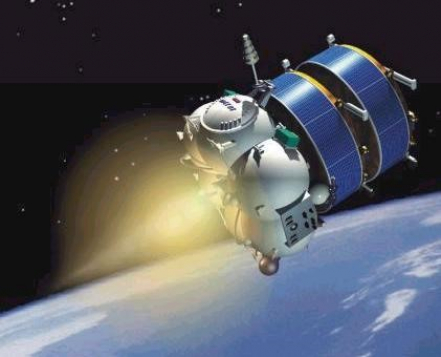-
StatusCompleted
-
Status date2017-01-26
-
Activity Code5C.154

The objective of the project consisted in designing, developing and testing an engineering model of a wideband and highly efficient radiation-cooled space TWT providing a saturated RF power of 240 W over 17.3-20.2 GHz (2.9 GHz bandwidth. More specifically, the first objective was to consolidate the specification based on a consultation of the key payload manufacturers. The second objective consisted in the assessment of the existing TWT designs and technology. A preliminary design of the TWT had then to be performed followed by the manufacturing and tests of breadboards for the design consolidation. Next an engineering model (EM) had to be manufactured and tested to validate the proposed design. Finally, the compliance of the EM results with the approved specification was analyzed.

The key challenges were the use of new technologies, especially for the RF output and the housing designs, that can handle higher voltages, beam current and thermal dissipation, this being related to the requirements for higher RF output power, with respect to the existing 130 W and 170 W Ka-band TWTs. Another key challenge was the required increased DC/RF conversion efficiency over the wide band 17.3-20.2 GHz, compared to TED’s standard products.
Ka-band technology is key for space applications. State-of-the-art European Ka-band TWTs provide either 130 W RF output power with an efficiency of 60% at saturation over 2 GHz bandwidth, or 170 W RF output power with an efficiency of 60% over 2.9 GHz. At 130 W, similar products are available in the U.S.A. The large capacities demanded by some Ka-band applications (e.g. HDTV and the Internet) require the repeaters on board the satellites to provide high levels of RF powers. When 250 W RF power is required, TWTs have to be recombined. The availability of 250 W Ka-band TWTs would reduce the number of on-board TWTs, therefore reducing the mass, volume and total cost. The European market would gain significant competitive advantage over to the U.S. market by providing as first an amplifier solution with such performance.
The product to be developed in this project provides simultaneously large RF power (240 W), wide instantaneous frequency bandwidth (2.9 GHz) and high DC/RF efficiency. Besides, the product is designed to offer flexible RF output power, which allows to optimize the satellite electrical consumption.
The architecture of the TWT to be developed is composed of :
An electron gun, a slow-wave structure with input and output RF transitions, a magnetic system, a collector and a housing (thermal and mechanical designs).
The first phase consists in the technology assessment and preliminary design validated by a Preliminary Design Review. The second phase is dedicated to the breadboarding activities including a Detailed Design Review where the design choices are discussed and the design for the final breadboard (FBB) agreed. Following the FBB’s tests, a Critical Design Review is held to freeze the design. The third phase comprises the engineering model activities with the final customers’ consultation. A Final Review meeting is held to assess the results of the EM activities and update the overall assessment of the 250W Ka band TWT technology.
The engineering model has been successfully manufactured and tested according to the space standard (full acceptance tests completed including the environmental/thermal tests). Three out of the 5 key payload manufacturers that were consulted gave their feedback on the EM test results and the updated specification. The Final Review meeting is successfully closed.



